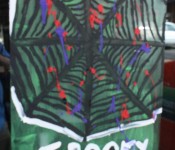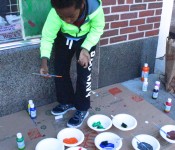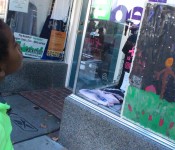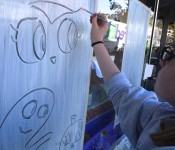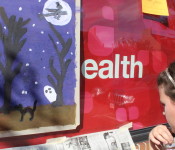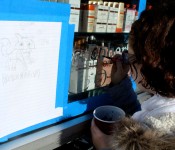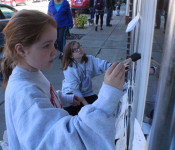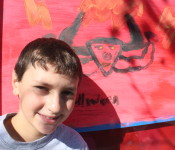Maeve Miller, 10, decided to take a different tact on just what to paint on the large window at Starbucks in Belmont Center.
“It’s a monster cake,” said the Belmont resident as she slowly applied green paint onto the glass while amused patrons sat inside with their coffees. The resulting art work produced a Frankenstein-type monster with a squiggly mouth at the base of a frightening pastry.
All day Saturday, Oct. 25, Belmont Center businesses up and down Leonard Street saw their windows transformed into pumpkin patches, ghostly havens and other scenes of specters and ghouls during the second annual Belmont Center Halloween Window Painting Contest.
Kids from second to eight grade – with parents in tow – paid for the privilege to express their scary vision of Halloween on the town’s main drag. Unlike the first contest that took place on a cold and dank fall morning, this Saturday was warm – maybe a bit too warm as windows on the sunny side of the street began flaking under the cloudless sky – and allowed many strollers to come out to see the kid’s artistic prowess.
Halloween-season window painting has a long tradition in other towns – several of Newton’s villages have participated for the past 15 years – and was brought to Belmont with the help of the owners of A Chocolate Dream.
Sponsored by the Belmont Center Business Association, the event’s proceeds were donated to the Foundation for Belmont Education.
